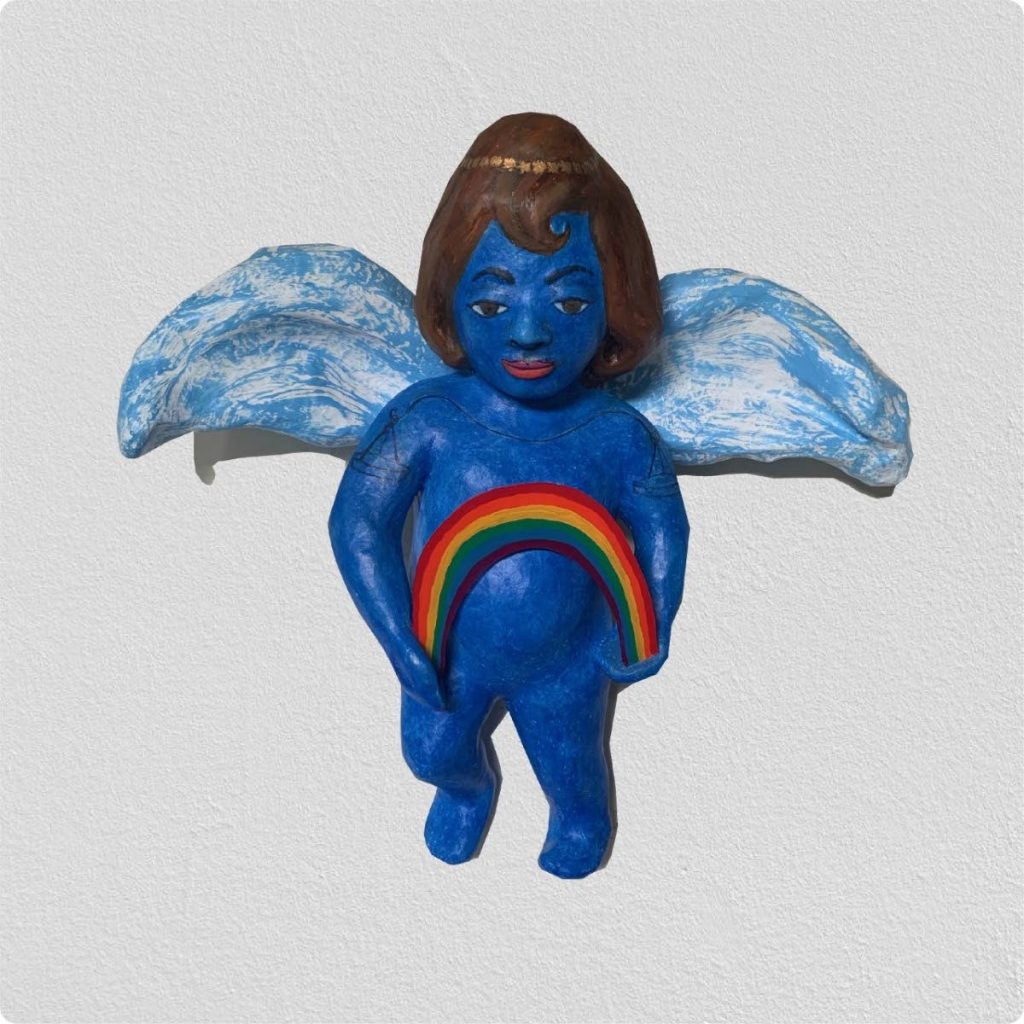Unveiling Nanan’s newest: Baby Krishna

ANDIL GOSINE
The Art Museum of the Americas of the Organization of American States (OAS) and the Permanent Mission of TT to the OAS are currently presenting Wendy Nanan, a retrospective solo exhibition by the pioneering Trinidadian artist.
Curated by Trinidadian-Canadian scholar Andil Gosine, this is the largest exhibition of the artist’s life’s work, and includes key projects from her repertoire over the last four decades. It can be seen on the AMA’s social media accounts on Instagram, Facebook, Twitter, and YouTube.
My maternal grandparents’ home was infused with odes to the Hindu god Krishna. The centrepiece was a large cut golden mirror portrait under which more than annual prayers and readings about his teachings were hosted by my grandfather. I was an enthusiastic temple-going kid but dreaded those rituals; with literally thousands of more exciting, more melodramatic, more colourful adventures to draw upon, why these long evenings focused on a single conversation between these two fellas, Krishna and his friend/disciple, Arjun?
Wendy Nanan’s Baby Krishnas, however, were immediately irresistible.
Where the Krishna of my childhood seemed a stranger, hers was instantly both mirror and mate. In place of the bread-and-butter Bala Krishnas that are seen in more common depictions, Nanan’s four original Krishnas instead hold icons of Caribbean, especially Trinidadian, life, including salt, sugar, oil, the scarlet ibis and that quintessential street food, doubles.
Her Krishnas referenced the troubles too, including violence, sexual abuse, poverty and socioeconomic disparity.
All of them are adorned with haloes and wings, reflecting the fact that for Indians of her generation (and my parents), the only access to formal education was at Christian schools; my father knows more Latin than Hindi, and can recite more verses from the Bible than the Bhagavad Gita. Indo-Caribbean people inescapably live the project of creolisation.
The rainbow in her newest Baby Krishna perhaps underscores Trinidadians’ relative success in living out this dynamic creolité, mixing and reinventing African, Asian, indigenous Caribbean and European culture and thought – albeit an ever-tenuous achievement, as the unsteady scales of justice tattooed across Krishna’s chest and arms suggest.
Appearing in the aftermath of the decriminalisation of homosexuality in the country and its public queer Pride celebrations, this Krishna surely also offers comfort and reassurance for new blessings.

Comments
"Unveiling Nanan’s newest: Baby Krishna"